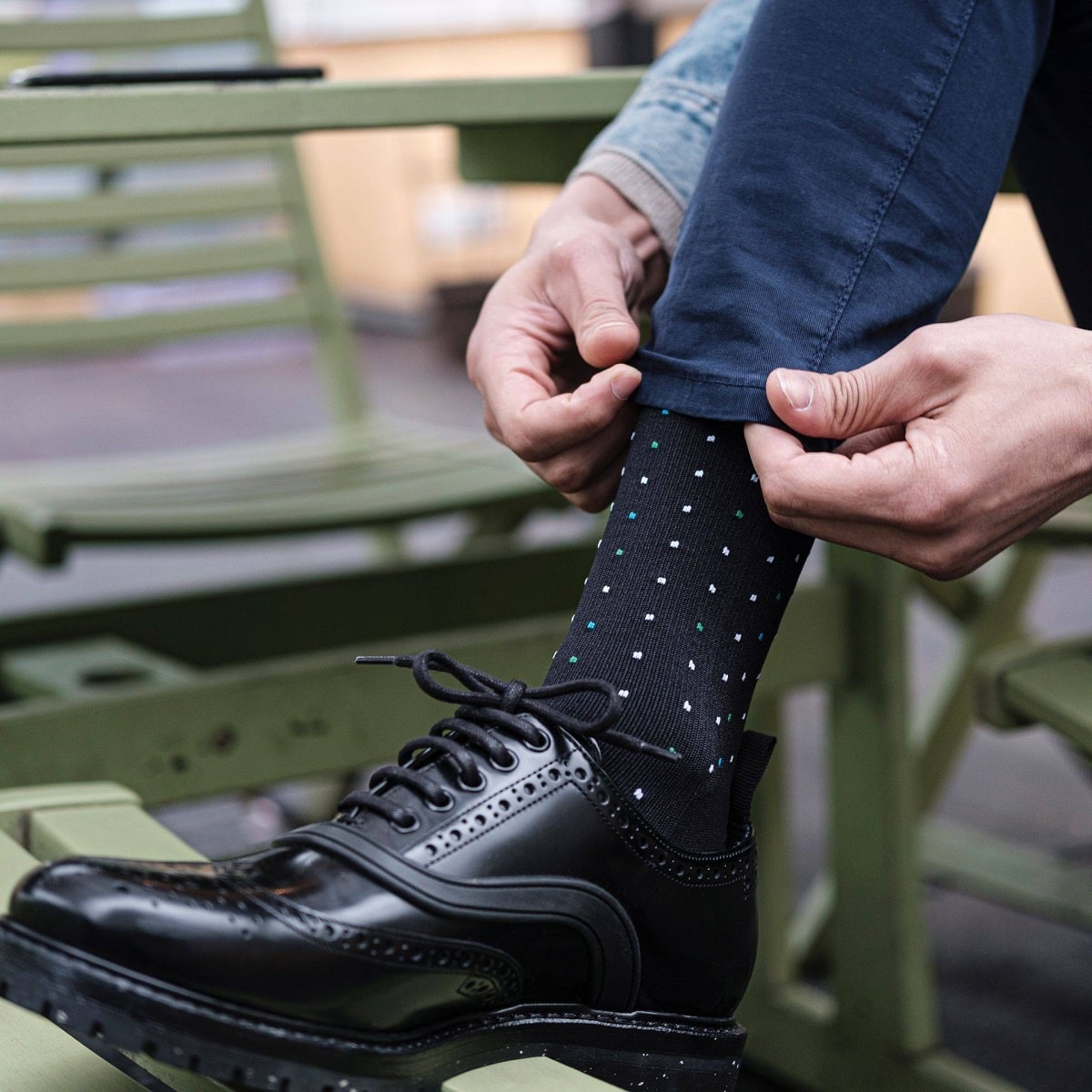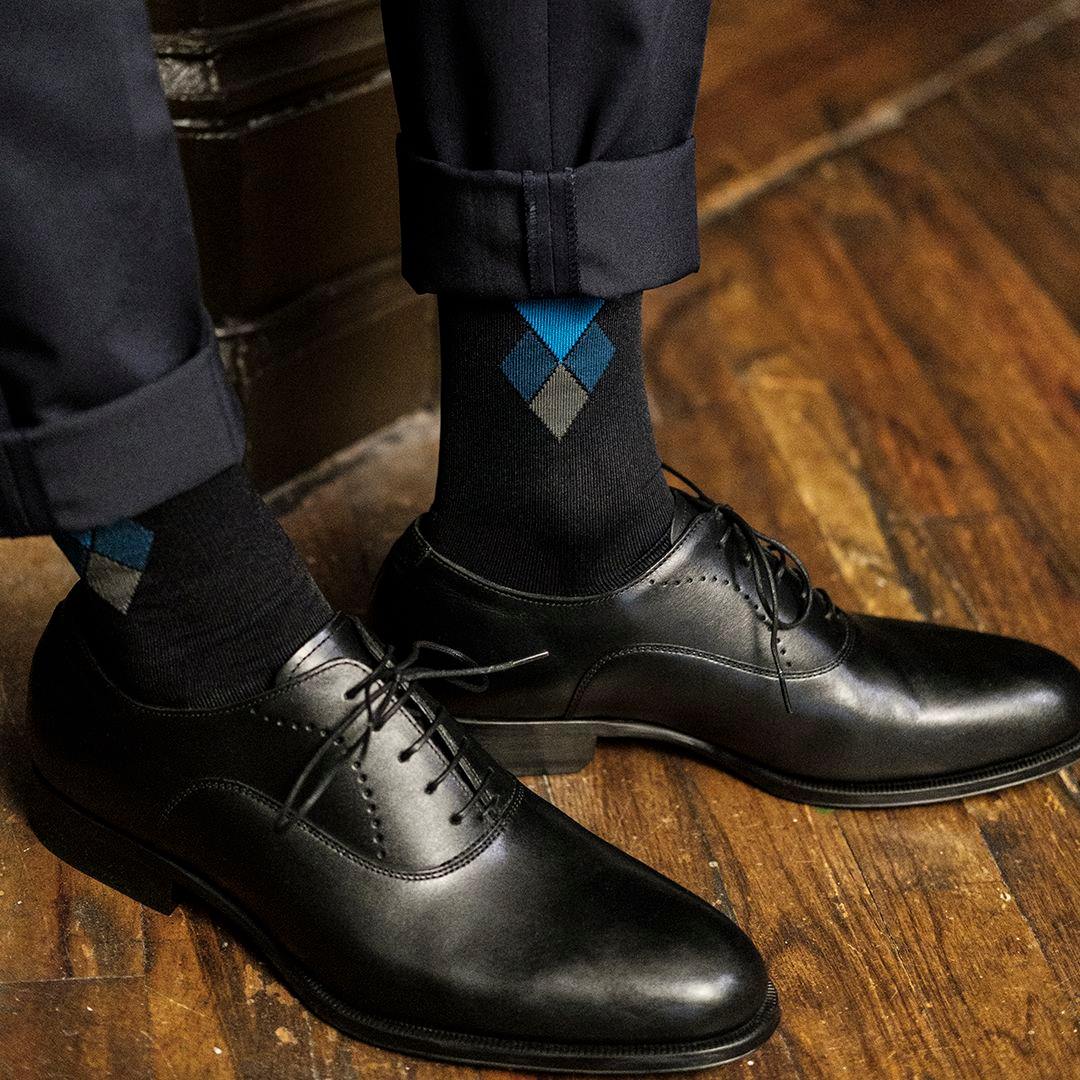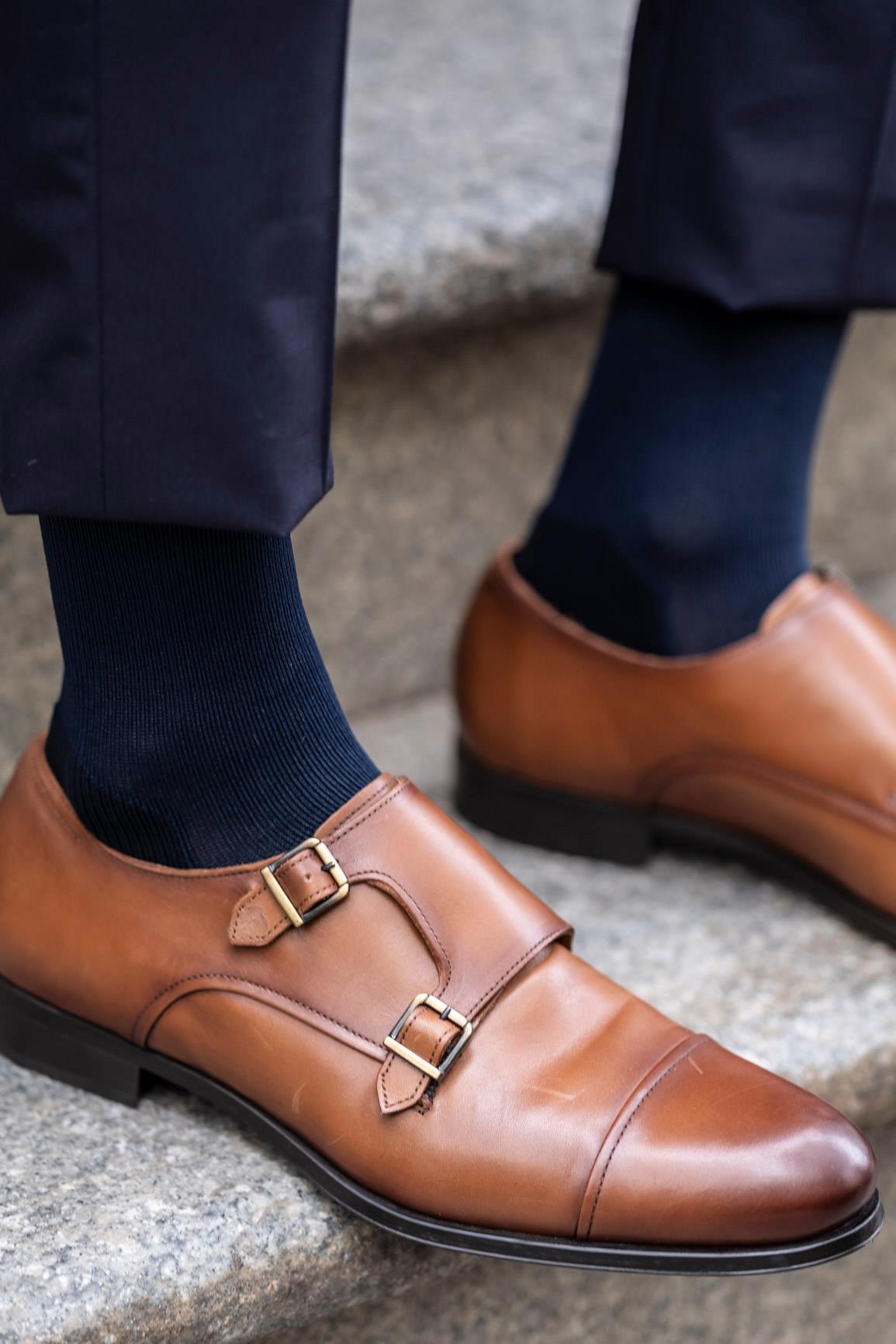1
HOME > Tips & Advice >
A GUIDE TO OVER THE CALF SOCKS: WHY AND WHEN TO USE THEM
Written by Menswear Style in Tips & Advice on the 13th December 2021

If you’re the sort of man who aspires to carry and dress like a proper gentleman, it always helps to pay attention to the details. Failing to take them into account can make an otherwise promising ensemble look amateurish, uninspired, or even sloppy. For some, it may seem impossible that a small, seemingly inconsequential touch could make or break an outfit. However, just think about how jarring white socks look against a dark suit. Still not convinced? Imagine someone crossing his legs and exposing an unwelcome strip of ankle or calf because he’s wearing socks that are too short.
Wearing the right socks can pull your look together but choosing which type of socks work best for your outfit can often be a confusing task. After all, sock height, material, thickness, colour, and pattern are just a few key factors you’ll need to consider. As a rule, though, it will probably serve you well to consider the height of your socks before anything else. In this article, we’ll be taking an in-depth look at over the calf socks, as well as sharing some helpful tips on how to choose and style them.

What Are Over the Calf Socks, and Why Wear Them?
Over the calf socks, as the name implies, are socks that cover the entire calf. In terms of their exact length, these socks typically end just below the knee. They’re also commonly referred to as knee-high socks, long socks, or executive-length socks. As far as sock variants go, they’re not considered fashionable in most circles. In fact, some might even consider them a dated style mainly fit for older gentlemen. The truth, however, is that over the calf socks have a lot of benefits to offer wearers of all ages. Aesthetically speaking, they’re considered an ideal choice for professional and formal settings. Their full calf coverage prevents the wearer from showing any skin even if the person stretches, crosses their legs, or moves around. They also stay up much more easily than mid-calf socks, as the curve of the calf anchors the sock to your leg and keeps it from sliding downward.

Choosing the Right Socks
Now that you’ve been brought around to the many good points of over the calf socks, the next important step is knowing how to choose a quality pair. As a starting point, you can think of the criteria below as essential details to look for the next time you go sock shopping:
Proper Sizing
Many companies make use of extra-flexible, stretchable fibres to produce one-size-fits-all socks, but sized pairs will generally mould themselves better to your foot. Socks that are even a little too large are likely to sag or slide down your leg no matter how hard you try to keep them up. Socks that are too small, meanwhile, can place uncomfortable pressure on your feet and legs.
Material
Natural fibres like cotton and wool will generally breathe better than artificial fibres. This feature is a must if you’d like to avoid sweaty feet. Socks made out of quality natural materials will generally take longer to wear out, pill less frequently, and feel softer and more comfortable than synthetic socks. Of course, most socks that purport to be 100 percent natural will actually still incorporate elastic materials like nylon and spandex. Fortunately, these mostly natural blends will still feel just as good and wear just as well as the real thing.
Thickness
Save your thick, cushy socks for the gym, the tennis court, or the hiking trail. While thick socks are acceptable and even encouraged in athletic settings, formal and professional settings require dress socks to be much finer. Thin dress socks won’t create any unsightly bumps or bunching under your trouser legs. Instead, they’ll produce an elegant, sleek silhouette from top to toe.

Styling Over the Calf Socks
One failsafe tip for coordinating your socks with the rest of your outfit is to match them with your trousers rather than your shoes. Bear in mind, though, that it’s difficult — if not impossible — to get an exact shade match every time. Indeed, your outfit can look off if your trousers and socks are the same colour but come in slightly different shades. You can work around this by choosing socks with understated patterns and complementary colours to provide some contrast. A pair of beige slacks, for example, can look quite good over a pair of socks with a classic houndstooth or herringbone pattern. Grey socks with blue stripes will nicely complement a pair of slacks in a slightly different grey without being too loud. You can also incorporate the secondary colours of your socks in other parts of your outfit, like your tie or shoelaces. This subtle colour coordination will pull your look together and make you look extra-sharp.

For white-tie or black-tie events, however, it’s best to entirely forego any socks that have bright colours or patterns. These events are considered the height of formality, so go for a pair of plain black silk or silk-blended evening socks instead. These are sure to match your trousers perfectly, and you’ll feel extra-elegant while you’re wearing them, too. When it comes to over the calf socks, don’t listen to the naysayers. As demonstrated above, there are plenty of reasons why these socks should be your go-to choice for work and formal occasions. Once you invest in a quality pair or two, you’ll quickly find that they’re a joy to wear all day long.
Trending
2
3
4
5
6
7
8
9
10









